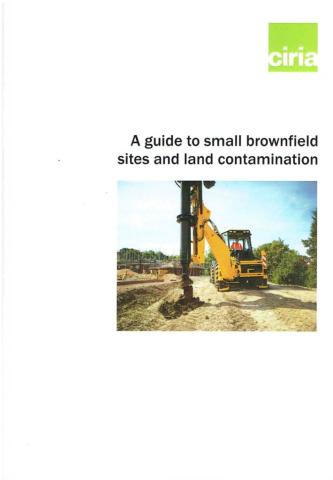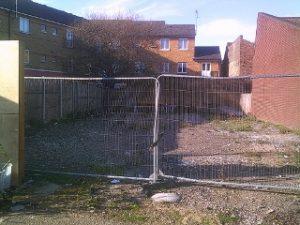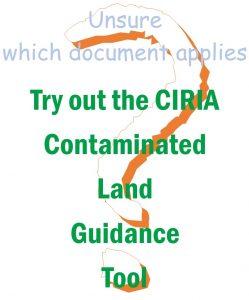South East Property Expo
We had a great day at the South East Property Expo
and for anyone who did not manage to get along we have made a 30 second compilation of the action.
First Aid at Work
Congratulations to four members of staff, Davina, Daria, Jo and Deppie
on passing their three day First Aid at Work course and exam.

An End to Unnecessary Pre-Commencement Conditions?
A necessary evil or an unnecessary evil, whatever your view, planning conditions are part and parcel of the challenges of development. From the 1st October, an update to the Town and Country Planning Act may help to ease the pain, it will make it mandatory for Local Planning Authorities (LPAs) to liaise with applicants over the wording of pre-commencement conditions. Whilst it may not have gained as much publicity as the revised NPPF, this small legislative change is still a potentially significant shift in the operation of the planning process.
These changes mean that a LPA will be required to provide an applicant with the suggested pre-commencement conditions prior to determining an application. Applicants must be given at least 10 working days to provide a “substantive response”, only after this can an application be determined.
Potentially, great news for developers and applicants who will now hopefully be given a meaningful say in the drafting of pre-commencement conditions. Planning officers are only human like the rest of us and under pressure mistakes are sometimes made. This should stop drafting errors, duplicates or wrong conditions being imposed on planning consents that all result in delays to delivery. Contaminated land conditions, with their multiple stages seem particularly vulnerable to confusion as to what can reasonably be undertaken pre-commencement. It is also hoped that this will rationalise the pre-commencement conditions thereby saving time and money.
There are potential benefits for LPAs as it forces a review of standard pre-commencement conditions to ensure they are still; necessary, enforceable, precise and reasonable, it should also help to speed up decision making. LPAs will need to review their standard conditions and put procedures in place to ensure that applicants are given notice of proposed pre-commencement conditions in a timely manner.
These legislative changes will have to be factored into determination timeframes and it would be prudent of applicants to ask for conditions early (if possible) to avoid last minute delays. If you are an applicant or agent, it may be worthwhile contacting planning officers to confirm they are aware of this change to avoid any surprises.
We welcome this change, however, only time will tell whether this will become just another tick the box exercise or whether this will facilitate meaningful dialogue about the suitability of pre-commencement conditions, reduce the number of pre-commencement conditions and ultimately speed up delivery.
While the Government’s intention was to reduce the time lag between grant of planning permission and site start, will the law of unintended consequences mean that it will simply delay the issue of the planning permission?
A guide to small brownfield sites and land contamination
We have been please to both sponsor this guide and to take an active part in the steering group, guiding development of the guide, described by CIRIA as “essential reading for anyone who doesn’t routinely develop brownfield sites, or for those who are up-scaling into small developments”.
Our hope is that this guide will help all those involved in smaller brownfield projects to make realistic appraisals of the risks and to the avoid the potential pitfalls of potentially contaminated sites. It is written in plain English to ensure it can be used by anyone, there are of course some technical words but for instance words like “pre-acquisition ” have been dropped in favour of “before you buy”.
The chapters deal with:
The Project Team
Before Buying a Small Brownfield Site
The Planning Application
Preparing for Building Works
Construction
Closeout
A flow chart picks out the key issues to be managed at each of the above stages.
There is a launch event on 4 October at CIRIA’s London office

Contaminated Land Identified as Environmental Factor Most Likely to Cause Upset to a Housing Development
A recent survey by Development+Infrastructure identified contaminated land as the environmental factor most likely to cause upset to a housing development, followed by flood risk, more details here.
Once again it shows that the importance of taking advice at the earliest stage cannot be over stated. As my grandmother used to say, forewarned is forearmed.
Builders Shun Brownfield Sites to Dig up Green Belt – The Times 12 December 2017
An article in The Times declares that research by the Campaign to Protect Rural England (CPRE) shows that sites with the capacity for nearly 200,000 homes are missing from the official Brownfield Registers. With limited resources local authorities tend to concentrate on the larger sites, meaning that this vital resource of smaller sites is overlooked.
We have extensive experience of providing advice on small sites and are on the steering group for the CIRIA small brownfield sites report, which is due to be published shortly with advice on developing small brownfield sites.
We provide comprehensive support to guide clients through the process of obtaining discharge of contaminated land planning conditions, if you are considering buying or developing a small brownfield site do not hesitate to call 020 8291 1354 or askgo@gosolve.co.uk.

The London Plan; The Spatial Development Strategy for Greater London
The Mayor has published a draft for public consultation, about which he says “So this London Plan sets out a new way of doing things, something I am calling Good Growth.” If you have any comments the consultation period runs to 2 March 2018.
The report has quite a lot to say about housing and the use of brownfield sites.
Efficient Land Use
In a section titled “Making the best use of land” the report points out that “London’s population is set to grow from 8.9 million today to around 10.8 million by 2041… This rapid growth will bring many opportunities, but it will also lead to increasing and competing pressures on the use of space. To accommodate growth while protecting the Green Belt, and for this growth to happen in a way that improves the lives of existing and new Londoners, this Plan proposes more efficient uses of the city’s land.”
The report then develops the theme of more efficient land use:
“1.2.2 The key to achieving this will be taking a rounded approach to the way neighbourhoods operate… This will mean creating places of higher density in appropriate locations to get more out of limited land, encouraging a mix of land uses, and co-locating different uses to provide communities with a wider range of services and amenities.
1.2.3 The benefits of this approach are wide-ranging… High-density, mixed use places support the clustering effect of businesses known as ‘agglomeration’, maximising job opportunities… They are places where local amenities are within walking and cycling distance, and public transport options are available for longer trips, supporting good health, allowing strong communities to develop, and boosting the success of local businesses.
1.2.4 Making the best use of land means directing growth towards the most accessible and well-connected places, making the most efficient use of the existing and future public transport, walking and cycling networks…
1.2.5 All options for using the city’s land more effectively will need to be explored as London’s growth continues, including the redevelopment of brownfield sites and the intensification of existing places, including in outer London. New and enhanced transport links will play an important role in allowing this to happen, unlocking homes and jobs growth in new areas and ensuring that new developments are not planned around car use…
Policy GG2 Making the best use of land
To create high-density, mixed-use places that make the best use of land, those involved in planning and development must:
A Prioritise the development of Opportunity Areas, brownfield land, surplus public sector land, sites which are well-connected by existing or planned Tube and rail stations, sites within and on the edge of town centres, and small sites.
B Proactively explore the potential to intensify the use of land, including public land, to support additional homes and workspaces, promoting higher density development, particularly on sites that are well-connected by public transport, walking and cycling, applying a design–led approach.
C Understand what is valued about existing places and use this as a catalyst for growth and place-making, strengthening London’s distinct and varied character.
D Protect London’s open spaces, including the Green Belt, Metropolitan Open Land, designated nature conservation sites and local spaces, and promote the creation of new green infrastructure and urban greening.
E Plan for good local walking, cycling and public transport connections to support a strategic target of 80 per cent of all journeys using sustainable travel, enabling car-free lifestyles that allow an efficient use of land, as well as using new and enhanced public transport links to unlock growth.
F Maximise opportunities to use infrastructure assets for more than one purpose, to make the best use of land and support efficient maintenance…
Delivering the housing London needs
1.4.5 To meet the growing need, London must seek to deliver new homes through every available means. Reusing large brownfield sites will remain crucial, although vacant plots are now scarce, and the scale and complexity of large former industrial sites makes delivery slow. Small sites in a range of locations can be developed more quickly, and enable smaller builders to enter the market. Building more housing as part of the development of town centres will also be important, providing homes in well-connected places that will help to sustain local communities…
Increasing housing supply
Policy H1 urges that: boroughs should optimise the potential for housing delivery on all suitable and available brownfield sites through their Development Plans and planning decisions… Boroughs should proactively use brownfield registers and permission in principle to increase planning certainty for those wishing to build new homes…
Small Sites
Under Policy H2 Small sites the report says that: Boroughs should increase planning certainty on small sites by:
1) identifying and allocating appropriate small sites for residential development
2) listing these sites on their brownfield registers
3) granting permission in principle on specific sites or preparing local development orders…
Vacant building Credit
In section 4.9.1 there is a reminder that: “In 2014 the Government introduced a Vacant Building Credit (VBC), which applies to sites where a vacant building is brought back into any lawful use, or is demolished to be replaced by a new building. The VBC reduces the requirement for affordable housing contributions based on the amount of vacant floor space being brought back into use or redeveloped. This has significant implications for delivery of affordable housing in London where a high proportion of development is on brownfield land where there are existing buildings.”
CIRIA launch Contaminated Land Guidance Tool
We are proud sponsors of this resource, which is designed to be the place the industry goes to find directions to the current documents and guidance.
The CIRIA website states: “Over the last two decades CIRIA, as well as publishing over 50 guides on contaminated land, has gathered information on more than 200 industry guidance documents that help practitioners and other stakeholders to assess and manage risk related to contaminated land and brownfield sites in the UK. Following suggestions from members, information on these references has been compiled in a searchable form. ”

Network Rail hits buffers over Japanese Knotweed
A recent case involving Network Rail highlights the potentially costly effects of ignoring Japanese Knotweed and allowing it to grow unchecked.
Two neighbours took action after the plant, growing on a railway embankment next to their homes, spread into their properties, resulting the the values being almost halved. In this case the neighbours argued that the knotweed encroached on their homes which caused a nuisance and interfered with the quiet enjoyment of their property. In judgement at the crown Network Rail were ordered to pay £4,320 to each claimant to treat the knotweed and in what is being seen as a key test case, awarded £10,000 each in compensation for the fall in value of their homes.
This has clear implications not only for Network Rail, who of course have innumerable neighbours, but also for all landowners, who should now be redoubling their efforts to identify and control any Japanese Knotweed on their land.
Permission in Principle
New powers enabling local planning authorities (LPAs) in England to grant planning ‘permission in principle‘ (PiP) for new housing on certain categories of land will speed up the delivery of new homes, the government has advised.
LPAs are now required to produce and maintain up-to-date, publicly available registers of local brownfield land available for housing. Land listed in ‘part 2’ of these new brownfield land registers will be the first category to benefit from automatic PiP for housing-led development, before the new power is rolled out to other categories of land later this year.
The registers are to be split into two parts. Part 2 of the register should list land which has been allocated by the LPA for residential development following set procedures. This is the land to which PiP will apply.
PiP is designed to separate decision-making on issues such as land use, location and amount of residential development from matters of technical detail, thereby reducing opportunities for delay to new housing development during the planning process. Where PiP has been granted, a scheme will receive full planning permission once the LPA has consented to the technical details. The acceptability of the ‘in principle’ issues cannot be reopened at the technical stage. Once granted, PiP for a site will last for five years unless the LPA specify otherwise.
Statutory guidance for local authorities will be published by June 2017, and will explain the role of brownfield registers and PiP in more detail, according to the government.
Not all the legislation and guidance is in place for PiPs and it remains to be seen how effective they will be in accelerating permissions.
